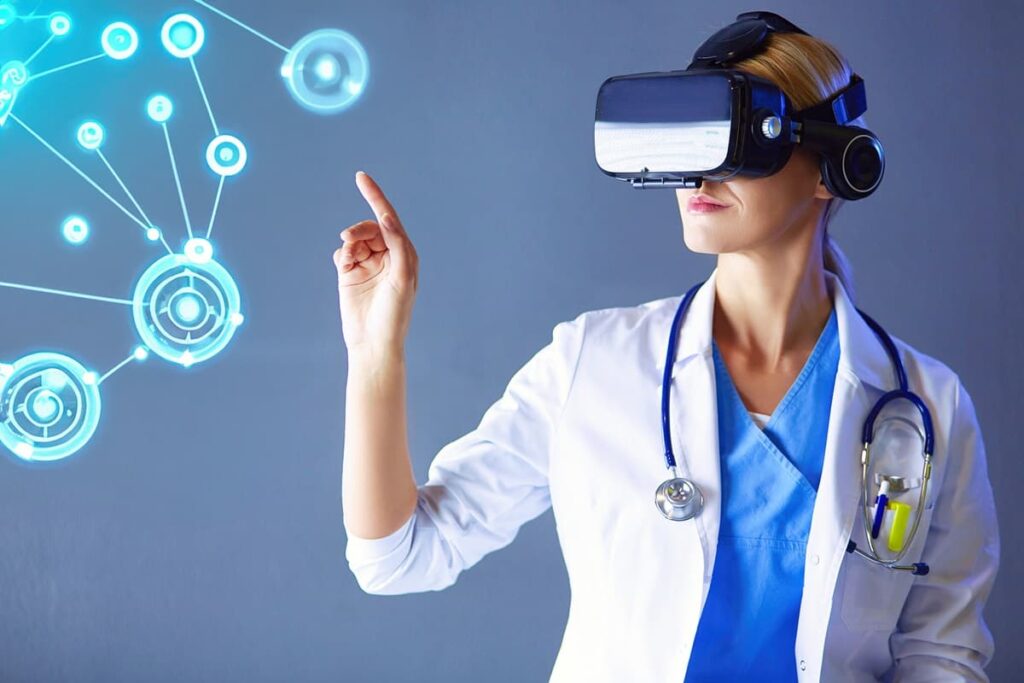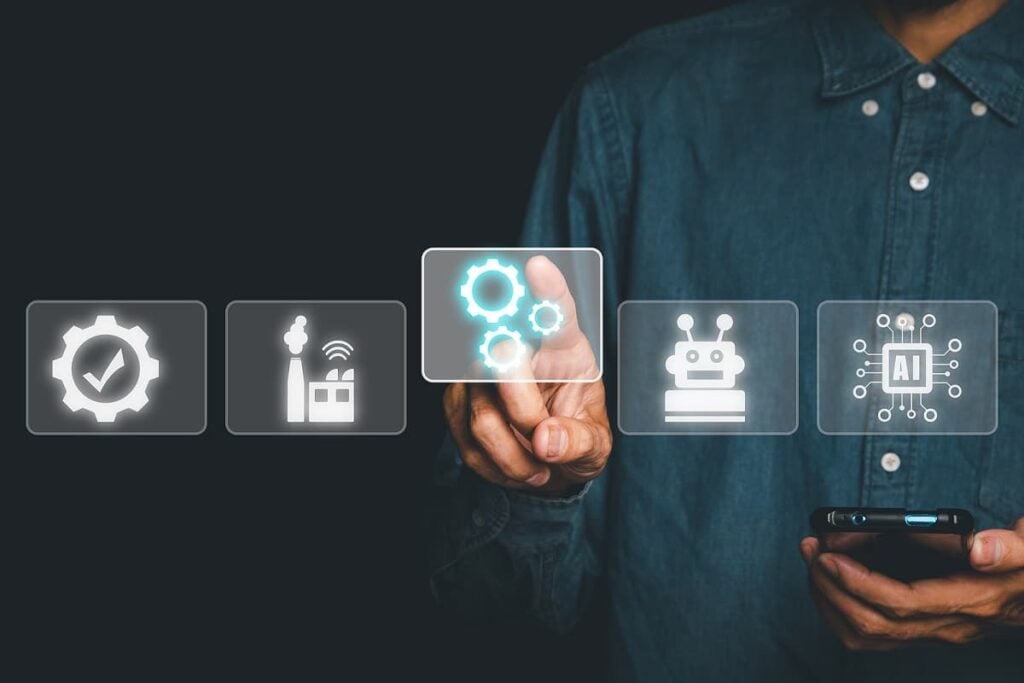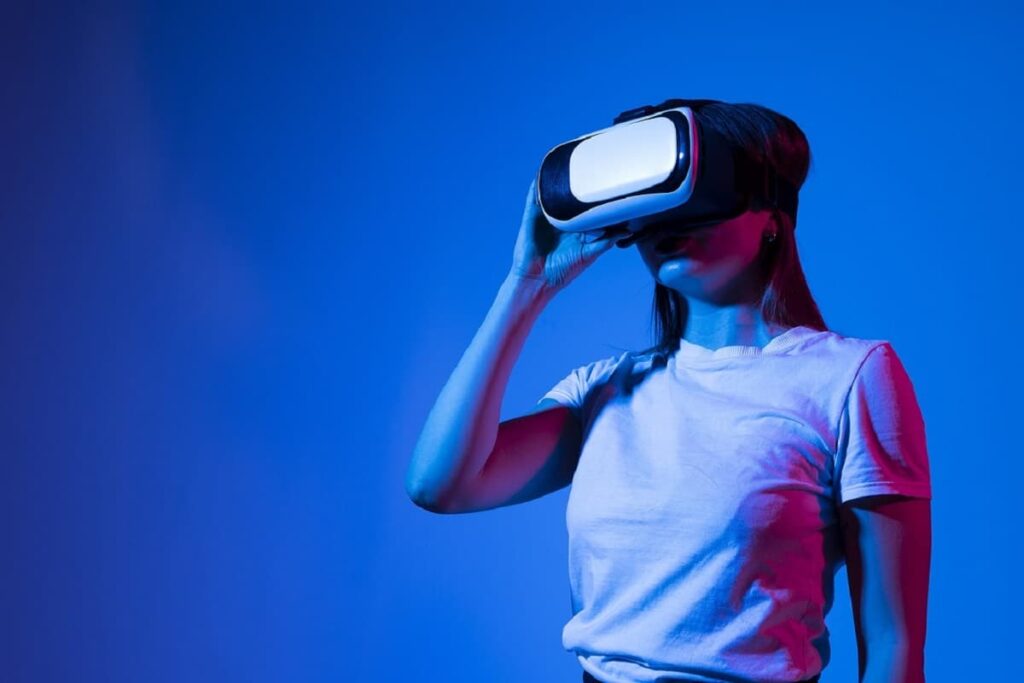8 Israeli AR/VR Startups Reshaping the World
Table of contents
Table of contents
- Hardware & Headset: A Virtual Assistant
- Industrial: DIY AR App
- Vision & Recognition: Snapchat but Cooler
- Dev Platform: A 3D Scanner
- Digital Health: A Holodeck for Health
- Gesture Control & Positional Tracking: In the Blink of an Eye
- Content & App Studio: VR Programming
- 3D Modeling: Taking the Show on the Road
- Conclusion

Our readers have been particularly interested in our recent coverage of Israeli startups, with big social media shares on our top 10 lists of Israel’s biggest funded startups and artificial intelligence startups. So this article brings together some of our favorite topics—God’s Chosen People, Israeli startups, CB Insights and augmented reality/virtual reality technology. The bright minds at CB Insights, working in partnership with the Government of Israel Economic Mission to the West Coast, put together the market map below to offer what it calls “a unique and complete view of early- to late-stage AR/VR players within Israel”. Our first thought: Holy Moses; there are more than 75 Israeli startups operating in this space. But it really shouldn’t be that big of a surprise. Israel is home to the most startups in the world per capita and boasts 65 companies on the NASDAQ, all with a population of about 8.5 million people (about the same as the state of Virginia).

According to CB Insights, the Israeli Air Force has been the driving force behind developing head-mounted display (HMD) vision technologies, so it’s not surprising that a healthy commercial industry has sprung up, one now starting to compete in the retail and consumer end of the AR/VR market. That’s certainly the case with an Israeli startup in AR we profiled earlier this year called Lumus. Meanwhile, Apple is rumored to have more than a thousand engineers working on some stealthy AR projects in Israel. While this will no doubt fuel the fantasies of conspiracy nutjobs who think Israel is somehow the world’s puppet master, we’re more interested in the real fantasies these Israeli startups are making happen now. Here we take a closer look at eight Israeli startups from different market categories.
Hardware & Headset: A Virtual Assistant
Founded in 2015, TechSee raised $7.5 million in a Series A in June for an AR platform that also uses artificial intelligence technologies, including deep learning and computer vision, to help companies troubleshoot technical issues for customers through their mobile phone. Think of it like an IKEA instruction guide meets AR. Can’t figure out how to assemble that telescope you got from grandma three Christmases ago? Call the company’s customer support service, and the agent will use TechSee’s AR platform to overlay instructions on how to assemble the instrument on the live streaming image:

The company markets its visual support tech to the electronics, insurance and retail sectors. Now we just need to download an augmented reality star chart.
Industrial: DIY AR App
Founded in 2013, WakingApp Realities has raised $7.8 million for a drag-and-drop solution to DIY AR/VR content. Its EnTiTi Creator is an AR and VR content creation platform that allows enterprises and small businesses to create, distribute and view augmented reality, 3D and virtual reality content with no coding skills required. The company scored quite a coup when Microsoft added WakingApp’s AR technology to Microsoft’s Power BI, a cloud-based business analytics service for visualizing and analyzing data using a 365-degree view in one dashboard. By scanning a QR code, BI Power users can view the relevant data on any surface. The company also markets the tech as a useful training tool with monthly plans starting at $500. We’re guessing Microsoft paid a bit more than that.
Vision & Recognition: Snapchat but Cooler
Founded in 2014, TIPIT, has taken in $2.5 million in a Seed round earlier this year for its AR app tools and software development kit (SDK) that does a lot more than let you squeeze flowers out of your ears, as cool but inane as that may seem. TIPIT grabbed a chunk of Generation Z users last year with the release of Solo, a photo and video filter app that allows users to green screen themselves and choose backgrounds for photos or filters that outlined their bodies. Its SDK allows other companies to bring AR effects to their apps.
TIPIT CEO Jonathan Rimon told TechCrunch that “some of the most advanced facial tracking platforms cost up to $300,000, while Tipit has made its body-tracking SDK solution available for free in the development phase with smaller customers paying about $200 per month”.
Dev Platform: A 3D Scanner
Founded in 2015, Mantis Vision, a 3D technology developer for mobile platforms, has raised $22.2 million from the likes of Samsung and Qualcomm. About three years, Mantis Vision moved into bigger orbits when Google adopted its technology for the Google 3D Tango Smart Phone. Using Mantis Vision’s motion-capable core 3D capture platform, called MV4D, it can capture 3D objects while in motion or standing still. The latest technology from Mantis Vision is its handheld 3D scanner that captures 640,000 points per second with very low noise. It also has ambient lighting, which means it can scan from complete darkness to daylight.
Digital Health: A Holodeck for Health
Founded in 2008, RealView Imaging is developing what it claims are interactive, true 3D holographic displays, particularly for the healthcare industry. It has raised $10 million to date. The company’s proprietary Digital Light Shaping technology projects hyper-realistic, dynamic 3D holographic images “floating in the air” without the need for any type of eyewear or a conventional 2D screen. RealView is releasing its first holography product, the Holoscope-i, this year for clinical use, allowing physicians to slice and dice organs in mid-air:

The company has a second holography medical device in the pipeline, Holscope-x, which displays the hologram within the patient’s body, making the patient literally “see-through”, like in one of those Body World exhibits.
Update 07/22/2020: RealView Imaging has raised $10 million in Series C funding to commercialize the HOLOSCOPE system in North America and Europe. This brings the company’s total funding to $20 million to date.
Gesture Control & Positional Tracking: In the Blink of an Eye
Founded in 2010, Umoove, has raised $2.5 million in disclosed funding for its face and eye-tracking technology for mobile platforms. While the technology has applications for AR/VR and gaming, as the user can interact with the mobile device with just his eyes without any additional hardware, the company actually markets the technology primarily to the healthcare industry. In this case, eye tracking is used to diagnose neurological disorders such as ADHD, concussions, traumatic brain injury, Alzheimer’s, autism, strokes and more. Umoove’s technology is packaged as two main SDKs; FaceSDK and EyeMovementSDK, both of which are available on iOS and Android. The FaceSDK is currently open to developers who are looking to integrate face-tracking into new or existing apps via a plug and play process. The EyeMovementSDK is in beta stage and is currently open to select strategic partners.
Content & App Studio: VR Programming
Founded in 2016, Inception, a VR app and platform for virtual reality content, has raised a total of $15 million in a series A funding round just last month led by Europe’s largest broadcaster, RTL Group. The company provides content for a variety of media purposed, from music videos to the Playboy Channel. Last month, Inception joined Microsoft Windows Mixed Reality Program and has been chosen as a beta partner for Facebook’s augmented reality Camera Effects Program. The Camera Effects Platform includes two products. Frames Studio lets users design frames that can be used either with profile pictures or in the new Facebook camera. AR Studio can be used to create masks, scripted effects, animated frames and other AR technologies that react to movement or interactions during live videos. Frame Studio is available globally, while AR Studio is now open for beta applications.
3D Modeling: Taking the Show on the Road
Founded in 2004, RDV Systems, a 3D visualization company, has raised $1 million to date for developing augmented reality technology for civil engineering projects. It has three main products for online collaboration, presentations, and outreach. Here’s everything you wanted to know and much, much more about a continuous flow intersection being constructed in Florida featuring RDV’s visualizations. The company has worked with a who’s who of municipalities, from Kannapolis, North Carolina, to Danbury, Connecticut.
Conclusion
The only thing that’s more amazing than the sheer number of AR/VR startups coming out of Israel is the actual technology they’re developing. The creepy red-eyed guy aside, Israel appears to be one of the leaders in this sector. That’s no mean feat. Israel is also the gay capital of the Middle East, which we’re guessing is an easier title to hold.
Sign up to our newsletter to get more of our great research delivered straight to your inbox!
Nanalyze Weekly includes useful insights written by our team of underpaid MBAs, research on new disruptive technology stocks flying under the radar, and summaries of our recent research. Always 100% free.

















